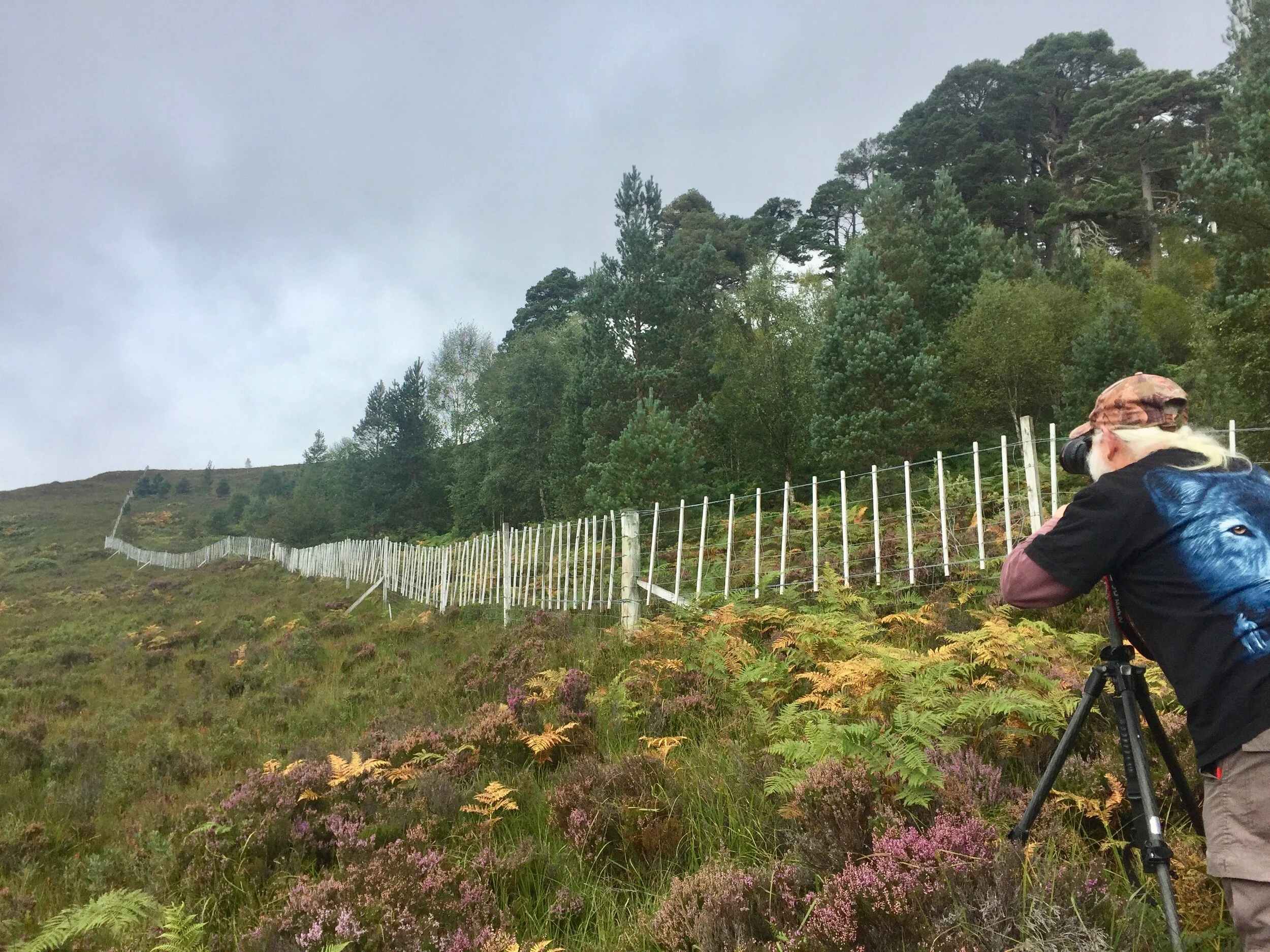Thirty years is a fair chunk of time in a human life but a blink of an eye to a wild forest. I had the good fortune to be able to see the result of three decades of woodland recovery at a site in beautiful Glen Affric.
September 14th 2020 marked the 30th anniversary of the first major project initiated by conservation charity Trees for Life. I accompanied conservationist and rewilder Alan Watson Featherstone to document the changes we’ve seen over the years.
Measuring the Champion Pine with the hypsometer. Photo: © Alan Watson Featherstone.
Alan photographing the fence and its effects. Note the difference inside and out. The smaller vertical bits of wood are markers to make the fence more visible. This reduces the danger to black grouse, which can otherwise collide fatally with fences.
In 1990, Alan, the founder of Trees for Life, raised funds for a fence to protect 50 hectares (125 acres) of ancient Caledonian pinewood. The site is in Glen Affric and is owned and managed by Scottish Forestry. (The area is called Coille Ruigh na Culiege. The Gaelic translates roughly as ‘the wooded slope of the midges’. It lives up to its name). Like many Highland woodlands it was being overgrazed into oblivion by unnaturally high numbers of deer. If nothing had been done the old trees would eventually have died without successors. Our scraps of native woodland would continue to retreat. But by taking action Alan and colleagues helped the trees, and their associated wildlife, to recover.
Alan with the Champion pine . . .
. . . and no, he hasn’t shrunk.
Photos: © Alan Watson Featherstone
I first visited this area in April 2000 on my first ever TFL Conservation Week. I’ve lost count of the number of times I’ve walked up this hill and seen this fenced exclosure. But every time I’m struck by this visible example of the effects of overgrazing, and how ecosystems can recover given a chance. Inside the fence trees and ground flora flourish, while outside they struggle to get a foothold.
Of course deer are an essential part of the forest ecosystem. Excluding them is just as artificial as having high numbers and no wild predators. But strategic fencing can play a valuable temporary role in the recovery of some habitats.
We made a similar celebratory visit in 2010. We measured the heights of particular trees using a hypsometer, a vaguely Star Warsey gadget that employs a laser to do the measuring. It was interesting to see how much a specific pine, holly, juniper and several downy birch had grown over the past 10 years. One tree in particular is known as the Champion Pine. Alan began monitoring this tree in the early days when it was around 30cm tall. On our recent visit it measured a healthy 10.91 metres.
Alan has carefully documented the lives of many trees in the glen since the eighties. I always enjoy hearing his observations and insights, and seeing his ‘before and after’ pictures. He’s also a superb naturalist and is the only person I’ve met who has photographed 100 different aphid species!
There are now many examples in Glen Affric and elsewhere of woodland regenerating given the right conditions. A myriad of wildlife thrives in its wake (including the crested tit that we got a good look at in the fenced area). It’s inspiring to see what can happen in just 30 years. Imagine what’s possible if we give it a few centuries …
While Alan no longer works at Trees for Life he continues to be a leading voice for rewilding and ecological restoration. You can check out his work here. Trees for Life continues to do great work on large scale rewilding and you can support them here.





